Inleiding
Verwijder de voorste paneelmodule van het Wi-Fi-model van de iPad Air 2 om toegang te krijgen tot de onderdelen in de iPad en deze te vervangen of repareren.
Wees erg voorzichtig bij het isoleren van de batterij met behulp van een batterijblokker. De batterijcontacten, en daarmee het logic board, zijn makkelijk ernstig te beschadigen. Zorg dat je, als je ervoor kiest de handleiding te voltooien zonder de batterij te isoleren, geen metalen tools gebruikt tenzij noodzakelijk (zoals bij het verwijderen van schroeven) om te voorkomen dat je kortsluiting veroorzaakt en kwetsbare elektronica beschadigt.
Gereedschap
-
-
Verwarm de iOpener gedurende dertig seconden.
-
Afhankelijk van het wattage van je magnetron kan dit langer of korter duren. De iOpener is warm genoeg als deze net iets te warm is om comfortabel aan te kunnen raken.
-
Tijdens de reparatieprocedure, en terwijl de iOpener afkoelt, kun je deze opnieuw verwarmen in fases van dertig seconden.
-
-
-
Verwijder de iOpener uit de magnetron door deze bij een van de twee platte eindes te pakken en het midden te vermijden.
-
-
-
Vul een pan met genoeg water om de iOpener volledig in onder te dompelen.
-
Verwarm het water tot het kookt. Zet het vuur uit.
-
Leg je iOpener gedurende 2-3 minuten in het hete water. Zorg dat de iOpener volledig in het water ligt.
-
Gebruik een tang om de iOpener uit de pan te halen.
-
Droog je iOpener grondig met een handdoek.
-
Je iOpener is gereed om te worden gebruikt! als je je iOpener opnieuw op wilt warmen, verwarm je het water weer tot het kookt, zet je het vuur uit en plaats je de iOpener gedurende 2-3 minuten in het water.
-
-
-
Als het glas van je scherm gebarsten is, kun je de scherven bij elkaar houden door het scherm met doorzichtige tape te beplakken. Zo voorkom je ook fysieke schade tijdens de reparatie.
-
Bedek het volledige scherm met overlappende lagen doorzichtige tape.
-
Probeer de rest van de handleiding zo gedetailleerd mogelijk op te volgen. Als het glas echter eenmaal gebroken is, zal het verder breken tijdens de reparatie en zul je misschien een metalen tool nodig hebben om het scherm er alsnog uit te wrikken.
-
-
-
Pak een verwarmde iOpener enkel bij de uiteinden vast en leg deze op de bovenkant van de iPad.
-
Laat je iOpener gedurende minimaal twee minuten op de iPad liggen om de lijm die de schermmodule aan de rest van de iPad bevestigt te verwarmen en verzwakken.
-
-
-
Ga voorzichtig te werk en wrik niet in de volgende gebieden:
-
Thuisknop
-
Naar voren gerichte camera
-
Hoofdcamera
-
-
-
Zorg dat de iPad ergens op rust, zodat de armen van de anti-klem aan de onder- en bovenkant van de iPad kunnen worden bevestigd.
-
Trek het blauwe handvat richting het scharnier om de armen te ontgrendelen.
-
Plaats de zuignappen aan de bovenkant van de iPad, een arm aan de voorkant en een arm aan de achterkant.
-
Duw de zuignappen stevig aan.
-
-
-
Trek het blauwe handvat van het scharnier weg om de armen te vergrendelen en de openingsmodus als het ware te activeren.
-
Draai het handvat met de klok mee tot je ziet dat de zuignappen zich uit beginnen te rekken.
-
Wacht een minuutje zodat de lijm de tijd krijgt om rustig uit te rekken. Als het goed is, zie je een opening verschijnen.
-
Steek een openingsplectrum in de opening onder het scherm. Doet dit als de opening groot genoeg is voor een plectrum.
-
Sla de volgende twee stappen over.
-
-
-
Druk een zuignap over de naar voren gerichte camera van de iPad. Zorg dat de zuignap zich stevig vast zuigt.
-
-
-
Trek de zuignap met een stevige kracht omhoog om zo een kleine opening te creëren tussen de schermmodule en de achterste behuizing.
-
Als je een opening hebt gecreëerd die groot genoeg is, breng je een openingsplectrum aan om te voorkomen dat de lijm zich opnieuw aan het toestel gaat hechten.
-
-
-
Schuif je plectrum langs de rand van het scherm richting de audio-jack.
-
Als je bij het langs de rand schuiven van je plectrum nog op een stevige weerstand stuit, herhaal je de procedure waarin je de iOpener verwarmt en de lijm onder het scherm verzwakt.
-
-
-
Verwarm de iOpener opnieuw en leg deze op de rechterzijde van het scherm om de lijm eronder te verzwakken.
-
-
-
Schuif de plectrum aan de linkerzijde langs de rand van het scherm naar beneden tot je de onderste hoek hebt bereikt.
-
-
-
Schuif je plectrum linksonderin langs de onderkant van het scherm en verwijder deze uit de rechter onderkant van de iPad.
-
Ga voorzichtig te werk en steek je plectrum onder de thuisknop niet verder dan 2 mm in de opening om schade aan de thuisknop te voorkomen.
-
-
-
Kantel de als enige overgebleven plectrum (die bij de voorste camera zit) om de bovenkant van de schermmodule van de achterste behuizing te scheiden.
-
-
-
Blijf de schermmodule vanaf de naar voren gerichte camera optillen.
-
Trek het scherm een klein stukje van de onderkant weg om het volledig van de achterste behuizing te scheiden.
-
Blijf de schermmodule optillen tot deze bijna haaks op de rest van de iPad staat.
-
-
-
Verwijder de enkele 1.8 mm lange Phillips-schroef die de batterijaansluitingen op hun contacten op het logic board bevestigt.
-
-
-
Schuif je isolatieplectrum onder het deel van het logic board waar de batterijaansluiting zich bevindt en laat deze tijdens de rest van het proces zitten.
-
Je kunt ook een batterijblokker maken met een speelkaart. Deze kaart schuif je onder de aansluiting van het moederbord om de batterij los te kunnen koppelen.
-
-
-
Verwijder de drie 1.3 mm lange Phillips-schroeven uit de beugel die op de schermkabel is geplaatst.
-
Verwijder de beugel.
-
Volg bovenstaande instructies in omgekeerde volgorde om je toestel weer in elkaar te zetten.
2 commentaren
Per separare il display con i plettri avete descritto 18 passaggi, ok, così anche i bambini capiscono.
Per isolare la batteria, cosa molta importante, avete descritto solo 2 passaggi in modo poco chiaro: non si capisce se il plettro è un plettro predisposto, se bisogna tagliarne uno e come si infila al di sotto del connettore senza fare danni.
su40 -
Buongiorno!
Abbiamo un plettro predisposto: Battery Blocker
Poi grazie per l’osservazione! Hai ragione, le spiegazioni per isolare la batterie non erano esaustive, perciò la guida originale in inglese è stata adattata. La traduzione non era più attuale. L’abbiamo aggiornata. Nostro sito è un wiki che viene migliorato e completato continuamente. Così anche gli utenti hanno la possibilità di modificare direttamente le guide e di aiutarci a tradurle.
Buona riparazione!






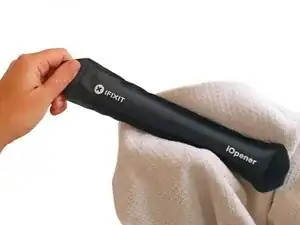


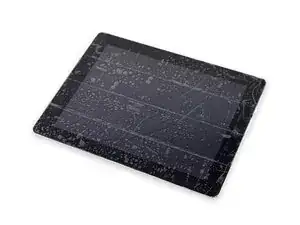








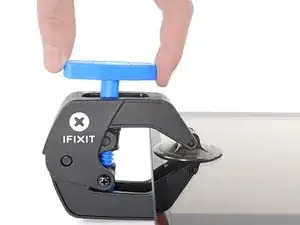




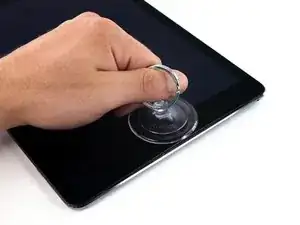

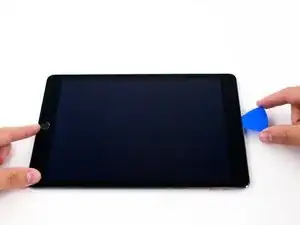











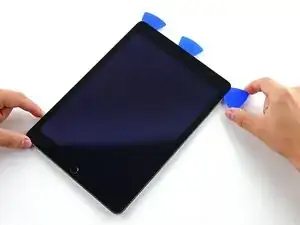



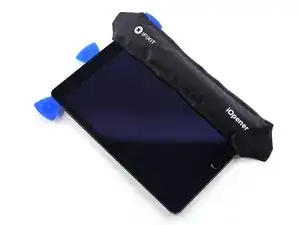

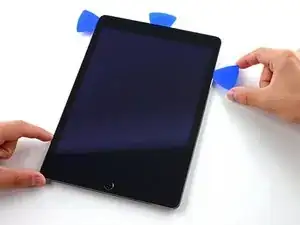










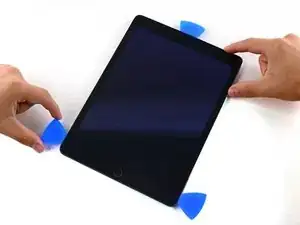




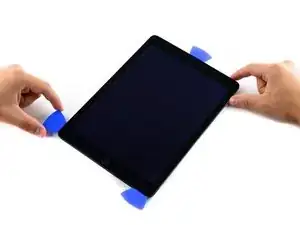

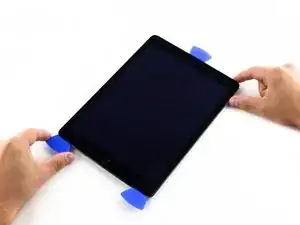




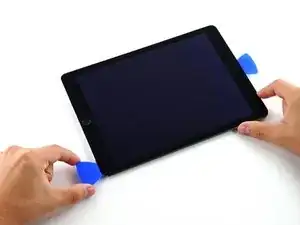






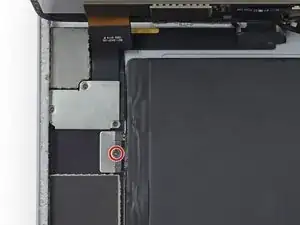
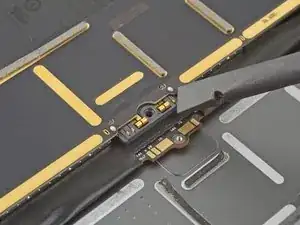






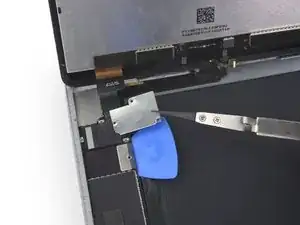







I didn't find this to be as hard as I had built it up in my mind to be; HOWEVER, saying that I need to say years ago I was the local Nokia service center in my town. But many years ago right after they got rid of analog times. Yeah. A classic installer/repairer mistake when starting something they haven't fixed or installed before is picking up the instructions, flipping through them; maybe even reading a section that is new-then tossing the instructions over the shoulder. "I got this." This usually comes right before something major gets broke. And I can tell you when you try to do it yourself and then mess it up horribly then take it to the repair shop. Well we called that "I can do it myself" syndrome and charged extra to put back together what they brought in in the box. Now knowing all this - I can't stress this enough because I am stupid, stupid, stupid. COVER YOUR SCREEN IN CLEAR BOXING TAPE AND READ ALL THE INSTRUCTION BELOW THROUGH TO THE END BEFORE EVEN ATTEMPTING THIS FIX. Take my advise.
windizy -
I didn't have an iOpener, so I used a wheat type heat bag. If you do this though, make sure you put a layer of plastic between your Mac and the bag, or you'll get condensation in places you don't want it.
Martin Gray -
I started out using the iOpener but switched to my wife's hairdryer. A heat gun or hair dryer proved to be much more convenient and is a time saviour. You can heat more and the glue becomes more fluid make the next steps with the opening picks much easier
Jan Van Puymbroeck -
I know this is obvious, but backup your iPad with iTunes before you start. I'd also turn off your passcode if you have one.
Laurie Higgins -
Ther first time you heat up the iOpener for this repair when its room temperature I had to heat it up for more than 30 seconds. I remember I had to heat it up for around 45 seconds. However, after that when you need to reheat it again during the repair 30 seconds will be enough.
Yousef Ghalib -
I used the wheat bag in a sensor microwave heating up to 65-70 deg C (155 def F).
ian cheong -
Get yourself a cherry pit bean bag the size of your iPad. Heat it, put the iPad on it for 3 to 5 minutes or so, reheat the cherry pit bean bag, again put your iPad on it. Then heat the iOpener and start working. The cherry pit bean bag will have to be reheated several times, but it will soften the adhesive so you have less problems with the iOpener
Tim Feyaerts -
The heating can be done very effectively (and quickly) with 3d printer heated bed. Make sure the bed is clean. Set the temperature to 60c, (130f ) and put the ipad face down for +/- 10 minutes. Repeat as needed throughout the “gentle prying” stages.
polleyphony -
The iOpener did not work at all for me.
I had to use a heat gun and bring the edges of the case up to ~200 degrees (used an infrared thermometer to measure) before the glue would weaken. This obviously superheated the metal frame, so I also had to wear gloves to handle the phone while prying the back off with the included picks.
Mike Jeanette -
Repair instructions worked like a charm. Had to be patient with the iOpener and getting the screen off. I tried repeatedly without success until shifting the suction cup a bit to the left side where perhaps the glue had loosened up a bit more.
Kyle -
The iOpener, in my opinion, is of no help. Many warnings to say “don’t warm it too much”, but the glue doesn’t melt if not warm enough. As a result, a complete waste of time and energy. In addition, too much liquid in it, so it doesn’t lay on the device on a sufficient surface. I took a hairdryer and it worked much much better.
laurentvidu -
I used an immersion bath to heat this to 180F and applied it to the device until the outside temperature of the opener read 150F with an IR thermometer. Removing the screen took very little force with this method.
breadandbits -
My experience. I was replacing the screen which had been cracked and a little shattered in some places. The iopener is pretty much useless, so was the suction cup. The suction cup would probably be more useful if I was doing something besides the screen. Also you probably want the clean the screen before using it so it can get good suction. I used a hair dryer on high for a couple of minutes at a time (someone on this tread suggested that). I used my exacto knife and a razor blade to get into the adhesive. First the exacto to get the initial cut, then the razor blade to go a little deeper. Could have probably just used the razor blade, but the exacto has a little more finesse. I got the razor blade in and a little under the glass then I used the picks to wedge in. I didn’t want to risk anything using the razor blade too much. Used tape to keep the shattered glass together.
trebor65 -
My experience pt2
Fortunately the shattering was mostly on the edges and most of it had adhesive on the back so it stuck together. Just take your time and work your way around following the guide to get the screen off. Have some goof off or goo be gone to clean the frame when putting the new glass on or putting the existing one back. (someone suggested that also, very good idea). Be careful of the LCD (you should know that). The cable on my LCD was pretty tight, so I propped it up while taking the cable cover off and when I put it back on I did the same thing. I just put a bottle on the battery and leaned the back of the LCD on that while attaching the cables and putting the screws back on the cover. Also be careful with the home button and the bracket on the back of it. I had enough old adhesive on left on the bracket that it stuck back to the new glass fine. So far only 12 hours in, so we will see how that holds up when the kids get at it.
trebor65 -
Another alternative if you do not have the iopener is to use a bed time hotwater bottle. Do not over fill it though. Just put enough hot water in to support the phone while you work around the adhesive.
I use both the hot water bottle and iopener together on Samsung's. It makes life easier
gazza667 -
I followed the directions and heated my iOpener for 30 seconds in a 1000 watt microwave, and it came out at 160 degrees F, as verified by a infrared thermometer. This allowed me to separate the last bit of the back of my Samsung S8, which was already coming off due to a swollen battery (hence the reason for the repair).
Dennis -
Hallo,habe den Akku erfolgreich getauscht.Doch seitdem gibt es bei Telefonaten eine Rückkopplung für den anrufenden.Bei mir ist alles normal.Woran liegt das?Mfg
Manu R -
If you follow these instructions, you will crack your screen like I did. Heating the iOpener for 30 seconds, using it to melt glue, then waiting 10 minutes to reheat is useless. The iOpener can be used to maybe warm the glue on whatever side you aren’t working on. You need a hairdryer and/or a heat gun to melt the glue and separate the glass from the iPad.
Anyone want to buy an old iPad with broken glass and a dead battery?
mpulliam -
Not everybody has a microwave. You should provide a target temperature for the iOpener and instructions for a conventional oven, or pot of warm water, or whatever. Although I will probably use a heat gun …
Esmond Pitt -
Three times heating opener and no luck. Tried pressing down gently on opener with a towel, and the opener broke. Wondering if I now replace table mats, fancy table cloth, etc. or will this stuff wash out.
Not impressed so far. Maybe the hair dryer next.
doug -
I support the comments about the iOpener. Everyone has a hair drier, FHS, so get a cheap IR thermometer (£18) and blow heat until the area is 60+ deg C. Still takes w while, and getting the screen off is v scary, but just add more heat if you feel resistance.
The rest of the kit is good, esp the magnetic screwdrivers.
Richard O'Brien -
No, everyone does not have a hairdryer. Some of us don’t even have hair. Thank goodness I already had an IR thermometer, though.
nin10doh -
#### WARNUNG WENN MINIMALSTER SPRUNG IM DISPLAY IST FUNKTIONERT DAS NICHT!!! ######
Hatte einen winzigen, minimalen Sprung im Display. Ich dachte es könnte gehen, weil der Sprung “abgeschlossen” war. Er hat in einer Ecke ein winzige Glasteil rausgeschnitten. NEIN! Geht nicht. Habe alles mit viel Geduld dem iOpener und einem Föhn erhitzt. Es ist trotzdem sofort über das komplette Display zersprungen…
T z -
I’ve started with iOpener but changed very quickly to a heatgun. That was more efficient.
Mizzoo, s.r.o. -
I could not get the iOpener hot enough to melt the glue on my ipad 6. I heated for 45 seconds once and it was boiling and it still never worked. Thank goodness contributors mentioned using a hair dryer. Using an 1700w hair dryer on high did the trick to get the screen off. Still took some time and the case got pretty hot but be patient. It took twice as long and a lot more patience to get the battery out.
Randal Haufler -
I have an Ipad with touch screen issue, if i replace this part it should be Ok?
janderson martin -
WARNING - DO NOT MICROWAVE ON A METAL MICROWAVE RACK
The metal microwave rack can heat up and melt through the iOpener cover letting the contents leak out.
Not a big issue for me as I have a heat gun and used that instead.
Run Up A Tree -
I opened my iPad with the iOpener. Be patient! It may take quite a bit longer to it the iOpener in the microwave than it says in the guide. My microwave can only do 800W and I had to put the iOpener in several times (maybe a total of 90-120 seconds). I recommend that you have the transparent side up an watch the bag carefully. As long a the bag doesn't bloat up and the liquid doesn't start bubbling you should be fine. But I recommend to take the iO out from time to time to check it. (More comments in Step 6.)
marcelflueeler -
I gave upon the I opener and used a hairdryer. (Fixed an iPad 6)
Tom Weber -
iPad mini gen5. I used the iOpener. My microwave is 1200w with carousel. 30 sec got the iOpener to 155ºF. For the 2nd heating, after 10 minutes sitting, the temp was still around 125º so I only cooked it for 15 sec. Not enough increase so +5 sec more which me to 165-170ºF. This should be considered ballpark info because who knows the real output of the various microwaves and the quality of the IR tool used to determine temp.
To successfully open my iPad mini I applied the iOpener twice to the left edge and twice to bottom. & once to R edge. Using the suction cup was difficult for me (I'm in my 70's so my hands don't work too well anymore). I had trouble holding the guitar pick and slipping them in (at an downward angle). In the end, sliding my thumbnail along the edge opened it very slightly and allowed the pick to get into the gap. I marked the ends of all my picks with a sharpie pen for the recommended 2mm insertion to avoid going in too deep. To get the screen open it took me approx 1 hour.
jharrison -
Can’t you just use a hair curler instead?
Aspect22 -
A hairdryer or heat gun works, if heating is kept around 100 deg C (212 deg F - boiling point of water). But… heating this way is cumbersome. Using a hotplate, set to 100 deg C, measured carefully with a fairly inexpensive IR gun, is simpler and easier, if you can afford the hotplate (I used an old pancake griddle with a thermostat knob). It works great for phones, setting them face down for 2 minutes, then picking them up with insulated gloves - cheap, wool gloves work fine. This may require repeated reheating to continue the display removal, but its much simpler.
Because its almost impossible to repeatedly lay an iPad/tablet on the hot plate, I propose an alternative.
Initially lay the larger iPad/tablet, face down, for 2 min, to heat all of the adhesive surrounding the display. Lift and begin the picking process describe in your removal steps. Then lay an iOpener on the hotplate for 2 min (already set to the exact, desired temp) to bring it to working temp for the remaining operations.
Dan Smith -
For iPads in particular, it makes sense to construct a simple, aluminum window frame, laid on a hotplate (see my comment above) that only touches the edges of the display, heating only the adhesive underneath. This prevents general heating of the entire device. Four strips of aluminum, placed together as a frame, would be the simplest and allow variations for all devices - envision it as a pinwheel of strips, radiating outward. Use it for any size device.
Dan Smith -
BTW, always read all comments at each step. New, and possibly useful, suggestions appear on occasion that can be crucial.
Dan Smith -
My iOpener got damaged at the first heating (30 s @ 800 W). The bag got a little melted hole where the liquid came out and a little melted area. I used a combination oven (normal heat and microwave) in microwave only mode. It has a metal grill where the iOpener was placed on. I suppose the metal grill concentrates the microwaves at some points and there the bag melted?
K. Fe -